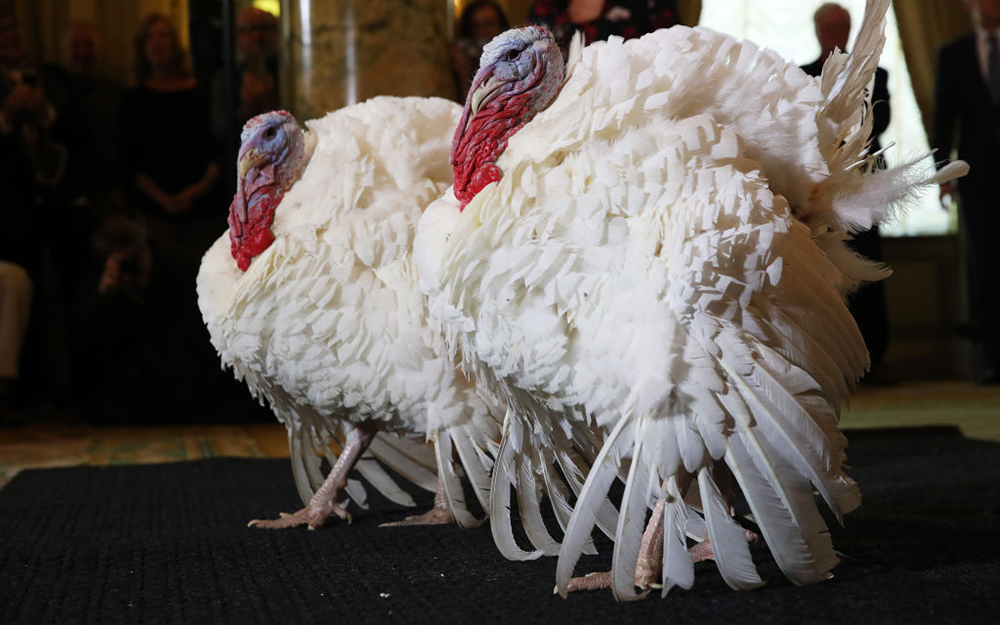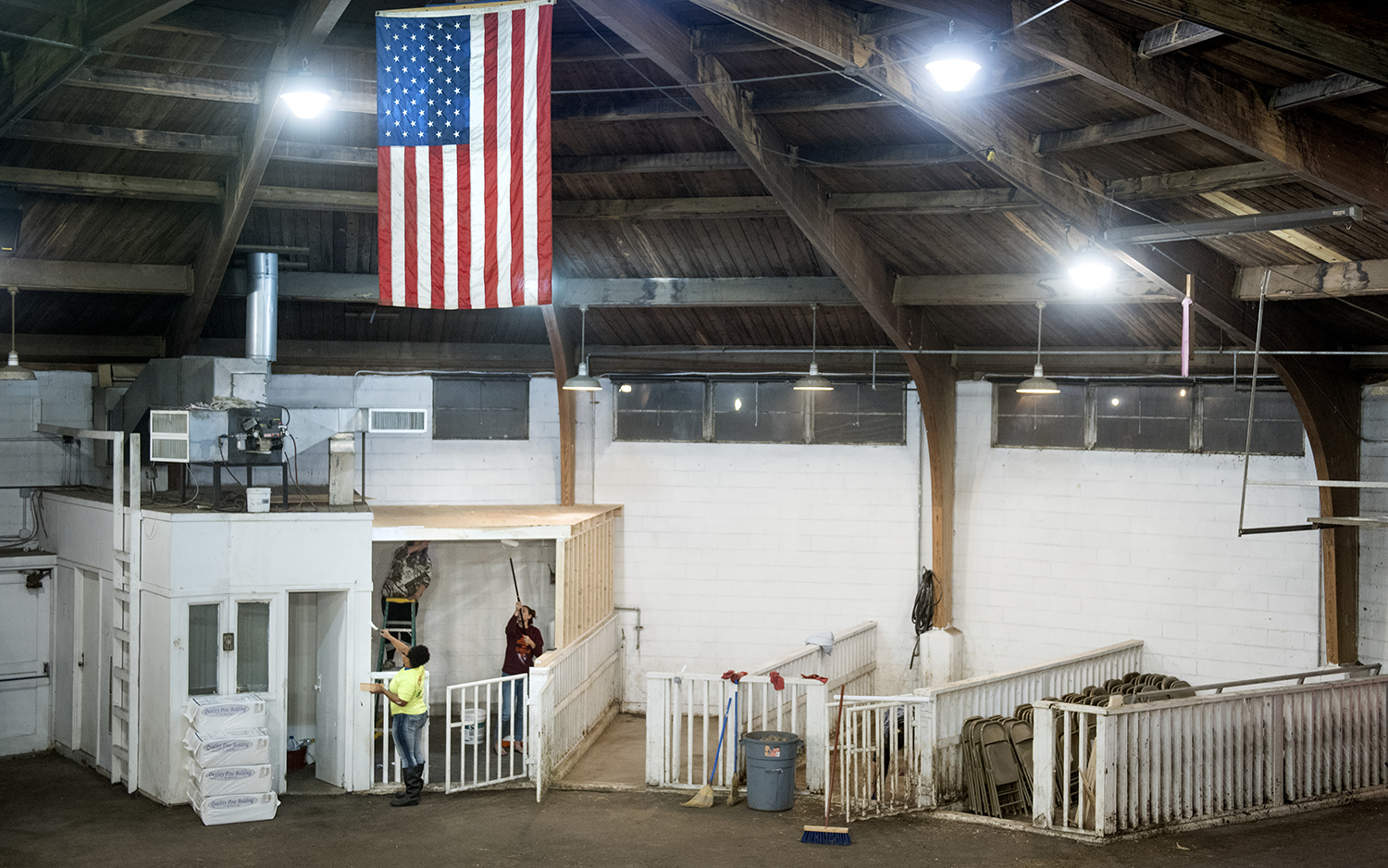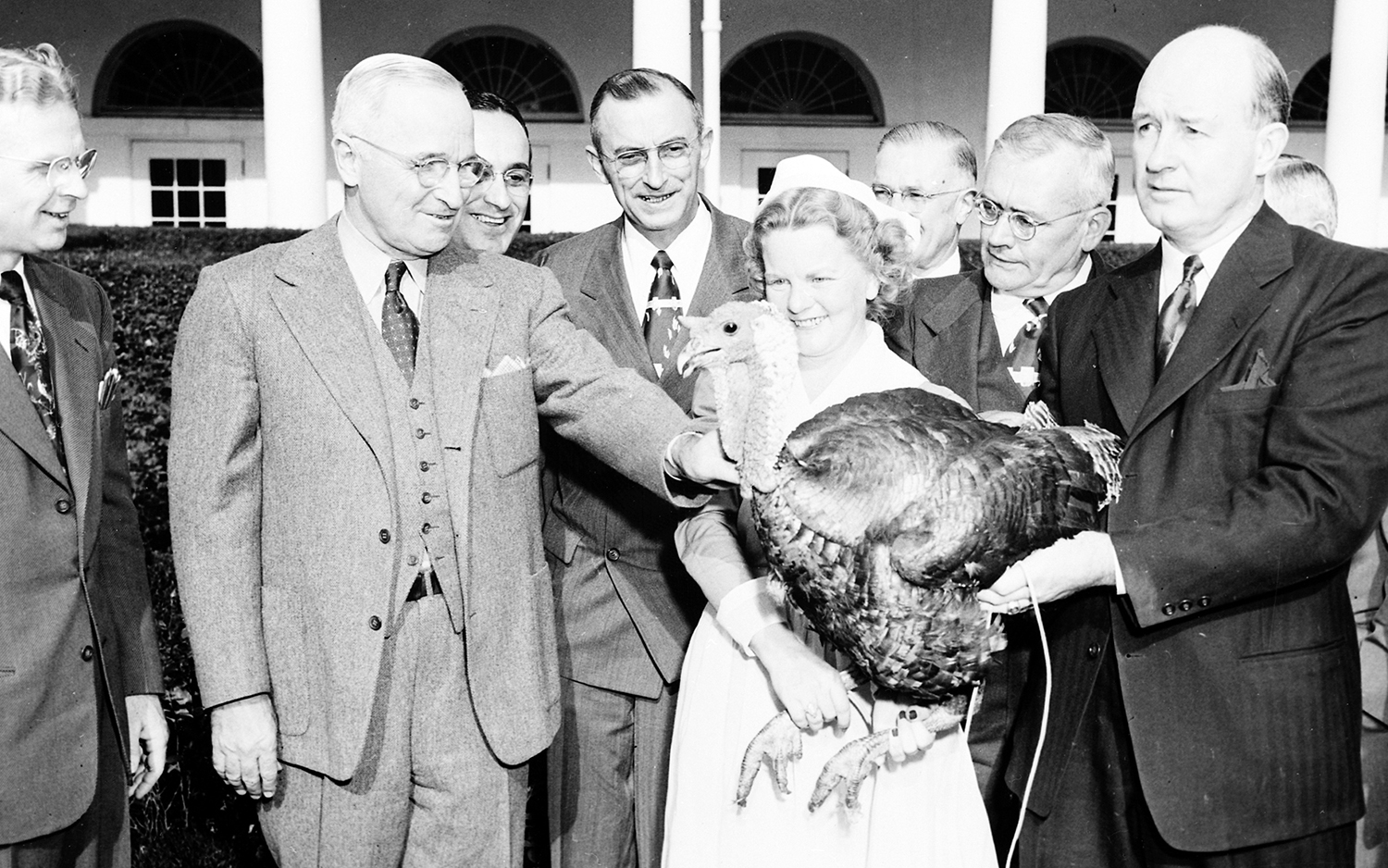Two Turkeys Got a Presidential Pardon Today. How Did This Thanksgiving Tradition Start?

Today (Nov. 20), two tubby turkeys named Peas and Carrots appeared before the president of the United States. With their pink- and blue-skinned heads perched proudly over rotund, white-feathered bodies, the pair had traveled all the way from a farm in Huron, South Dakota, to receive a precious gift denied to most Thanksgiving birds — a stay of execution.
Peas and Carrots were selected from the so-called Presidential Flock of 50 turkey chicks that hatched on June 28, White House representatives said in a statement. Peas weighs 39 lbs. (18 kilograms) and stands 30 inches tall (76 centimeters), while his larger brother Carrots weighs 41 lbs. (19 kg) and is 32 inches tall (81 cm), according to the White House.
Peas — the official National Thanksgiving Turkey — was presented on a table to President Donald Trump at the White House (Carrots, as the alternate bird, waited nearby). President Trump extended his arm over the waiting turkey, saying, "Peas, I hereby grant you a full pardon."[10 Terrific Turkey Facts]
Prior to the pardon, President Trump joked about the "fair and open election" that selected the two turkeys, and warned that that even though they were about to be pardoned, "House democrats are likely to issue them both subpoenas."
Every year during Thanksgiving week, the sitting U.S. president comes face-to-beak with turkeys seeking a fate more hopeful than that of their fellow fowl. The birds typically receive a public presidential "pardon," and are granted a life of leisure — 2018 marks the third year that the pardoned poultry will retire to Gobbler's Rest, a facility maintained by the Department of Animal and Poultry Sciences at Virginia Tech (VT).
"Virginia Tech has deep roots in the turkey industry," said Rami Dalloul, a professor of poultry immunology and health at VT.Dalloul's research group sequenced the turkey genome for the first time in 2010.
Much of the work performed by his team focuses on the turkey transcriptome — which genes are expressed under certain conditions. This helps scientists to better understand how turkeys respond to health challenges, Dalloul told Live Science.
Sign up for the Live Science daily newsletter now
Get the world’s most fascinating discoveries delivered straight to your inbox.

At their new home, the "celebrity birds" inhabit a pen in a large pavilion used for educational programs, Dalloul said. Peas and Carrots will follow in the footsteps of their predecessors — Tater and Tot, pardoned by President Barack Obama in 2016; and Drumstick and Wishbone, pardoned by President Donald Trump in 2017 — and live out the remainder of their natural lives at the university as poultry ambassadors, VT representatives said in a statement.
"They're very social, very docile birds," Dalloul said. "They see people and they start showing off. They ruffle their feathers, they strut, they come up and they rub against people — they're pretty funny."
But how — and why — did this holiday tradition of pardoning turkeys begin?
"Let's keep him going"
The first president to grant clemency to an American turkey may have been Abraham Lincoln, according to the White House Historical Association (WHHA). According to a dispatch filed by White House reporter Noah Brooks in 1865, a live turkey intended for the Lincoln family's Christmas dinner was spared after Lincoln's son Tad "interceded in behalf of its life."
Since the 1870s, individual poultry dealers and organizations such as the American Legion and the Girl Scouts of the U.S.A. have presented presidents with gifts of live turkeys, the WHHA says. Sometimes these turkeys arrived "in elaborate crates and costumes," White House officials said in the statement.
In 1947, Harry S. Truman became the first president to receive turkeys from the Poultry and Egg National Board and the National Turkey Federation, who offered the birds to promote the poultry industry. Though by all accounts it appears that those turkeys received no mercy from President Truman, and were likely eaten for Christmas dinner, the WHHA said.

It wasn't until 1963 that President John F. Kennedy offered a glimmer of hope to a donated Thanksgiving bird, saying, "Let's keep him going," which The Washington Post reported using the words "reprieve" and "pardon," according to the WHHA. During the 1970s, two turkeys were shown mercy by a first lady and spared the knife; Patricia Nixon sent the White House's bird to a petting zoo in 1973, and Rosalynn Carter did the same in 1978.
President Ronald Reagan formalized the practice of "retiring" donated Thanksgiving turkeys to a farm, in 1981. Officially pardoning the turkey became part of the tradition in 1989; as animal rights activists protested nearby, President George H.W. Bush told reporters that the "fine tom turkey" would not end up on anyone's table, according to the WHHA.
"He's granted a presidential pardon as of right now," Bush said.
Peas and Carrots, selected for their appearance and temperament, may have escaped the oven this year, but approximately 46 million of their less-lucky fellow turkeys will end up as Thanksgiving dinners across the country, according to the National Turkey Federation.
- 5 Myth-Busting Facts for a Safe Turkey
- Thanksgiving Trauma: The 7 Strangest Holiday ER Visits
- Five Fascinating Turkey Truths
Originally published on Live Science.

Mindy Weisberger is an editor at Scholastic and a former Live Science channel editor and senior writer. She has reported on general science, covering climate change, paleontology, biology and space. Mindy studied film at Columbia University; prior to Live Science she produced, wrote and directed media for the American Museum of Natural History in New York City. Her videos about dinosaurs, astrophysics, biodiversity and evolution appear in museums and science centers worldwide, earning awards such as the CINE Golden Eagle and the Communicator Award of Excellence. Her writing has also appeared in Scientific American, The Washington Post and How It Works Magazine. Her book "Rise of the Zombie Bugs: The Surprising Science of Parasitic Mind Control" will be published in spring 2025 by Johns Hopkins University Press.









